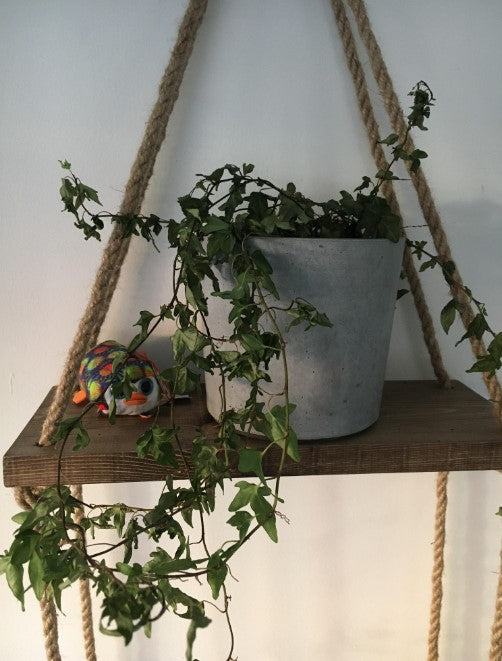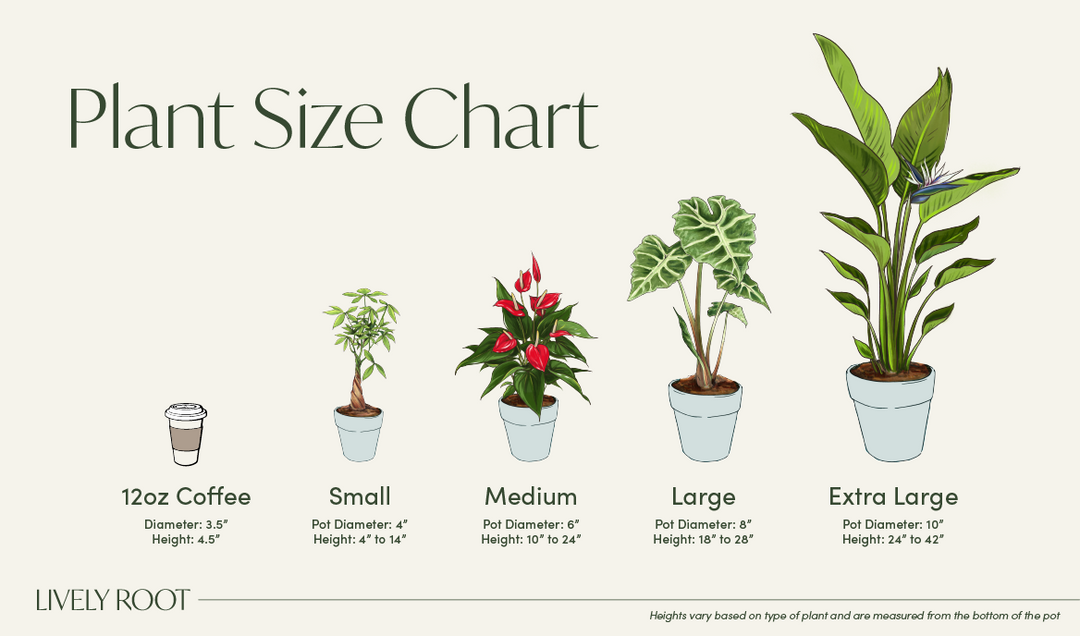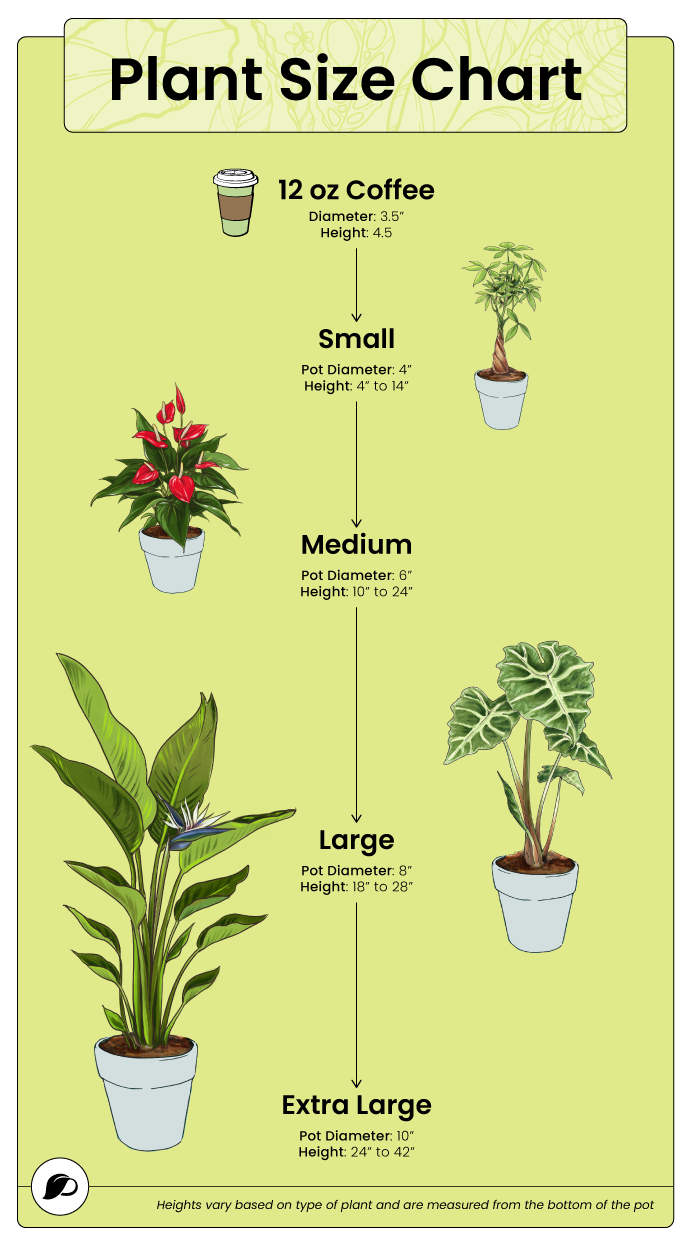Welcome
You have points
Recently viewed
Wishlist
Sign in to access your favorites

English Ivy, scientifically known as Hedera helix, is a versatile and resilient evergreen vine. It belongs to the Araliaceae family and originates from Europe, Western Asia, and North Africa.
This hardy ivy plant can thrive in various conditions and is suitable for hardiness zones 4 to 9.
English Ivy is characterized by its glossy, dark green leaves and trailing vines. It is often grown for its ornamental value and can be trained to climb along structures or used as ground cover. While it prefers partial to full shade, it can tolerate some sun. English ivy is relatively easy to care for and is often used in landscaping and indoor settings. However, if ingested, it is toxic to pets.
English Ivy varieties include English Ivy Glacier, English Ivy Gold Child, and English Ivy Deep Green Ripple.
With its lush foliage and trailing vines, this houseplant adds aesthetic appeal indoors as a hanging plant and outdoors as vertical greenery.
The English ivy isn’t a demanding plant. Growing it indoors or outdoors is straightforward if you understand its needs. Your ivy will thrive if you know how to care for it and meet its proper water, light, temperature, and humidity requirements.
Watering your English ivy about twice a week should be enough to prevent underwatering issues. Keep checking the top inch or two of the soil to ensure the plant is thirsty. The trick is to allow the soil to dry between waterings and avoid standing water in the tray, which can lead to root rot. Also, mist the plant 1-2 times a week, especially if the weather is dry.
English ivy enjoys moderately moist soil and environment, but the potting mix shouldn’t be waterlogged. If the top inch or two of the soil is moist, your ivy is sufficiently hydrated. In addition, make sure that the pot has enough drainage holes to prevent soggy soil and problems that can arise from overwatering the plant.
The steps to caring for English ivy include providing the right growing conditions and paying attention to temperature, humidity, and sunlight.
The English ivy thrives in temperatures between 45°F and 60°F. While it can handle a little drop in temperature, it prefers 40 degrees and above and won’t survive below 23 °F. If you live in a hot region, it can tolerate warmer temperatures of around 70°F - 90°F
The popular ivy plant enjoys average humidity levels of 60%-70%. Make sure it doesn’t go below 40%. You can boost humidity levels by misting your green companion or using a pebble tray. If you want to use a humidifier, set it at 40%-60%. Beware that excessive humidity can encourage pests and diseases.
An English ivy does best in bright, indirect light indoors. A few hours of bright light in the morning or evening can be helpful, but make sure not to scorch the leaves in the afternoon sun. Filtering the light through curtains can help.
At the same time, it may fail to grow correctly and turn leggy in darker conditions. Rotating and adjusting the plant position seasonally can meet its sunlight needs...
If you want to grow new baby plants, you can propagate your English ivy plant in your home. All you need is a cutting. Start by using sharp shears to cut a 4” —5” piece of the ivy vine. Ensure that the cutting has at least 3-4 leaf nodes.
Dip the cut end into rooting hormone powder and plant it in the potting mix. Root the ivy cuttings in a sandy soil mix. You can also propagate your ivy in water.
English ivy loves rich, loamy soil that retains moisture but drains well, with a pH level of 5.5-6.0. Use a grow mix with peat moss or compost in a pot with drainage holes.
Outdoors, their beds can be prepared by amending heavy clay or sandy soils with compost. Applying a 2”-4” layer of organic mulch around the plant bed helps conserve moisture.
During the growing season, spring and summer, feed your ivy every 4 weeks with liquid fertilizer. Dilute a 20-20-20 NPK fertilizer to half the strength before using it.
If you want to repot your English ivy, the best time to do it is in spring and summer when the plant is actively growing. During these seasons, the plant will better establish and strengthen its roots. You only need to repot your ivy every 2-3 years. The new pot should be 1”-2” bigger than the current pot. Remember to be gentle when pulling the plant from its old container. Loosen its root ball and transfer it to its new planter, filled with a quality indoor plant potting mix. Then, water sufficiently your freshly transplanted English ivy.
English ivy indoor care involves pruning to keep your plant thriving and prevent leggy growth. It will be happy if you prune it in the spring. You need to pinch or trim the stems above a leaf node.
You should use clean, sterilized shears or scissors. Still, if you want to remove unwanted vine stems and yellow, crispy leaves, gently snap them with your fingers. Cut the vines at the base for outdoor plants instead of ripping them away.
The English ivy is prone to problems, such as pests, diseases, and environmental stress. Identifying the symptoms and offering care is crucial for maintaining its health and vitality.

Source: Reddit
See below some of the most common issues you can have when growing an English ivy at home:
Enhance the beauty and vitality of your English Ivy with the following perfect companion plants that complement its lush foliage and trailing vines.
Explore these alternative pet-friendly plants that offer similar aesthetic appeal and easy care as English Ivy, ensuring a vibrant and safe greenery collection for your home.
A: Yes, English ivy can survive and grow in full shade. But it thrives best in partial shade with filtered sunlight, which prevents leggy or stunted growth.
A: Yes, the English ivy is an air-purifying plant that can enhance indoor air quality. It can remove toxic substances, such as benzene, carbon monoxide, formaldehyde, toluene, trichloroethylene, xylene, etc.
A: If you live in a hot and humid region, your English ivy can grow well when the temperature is below 90°F. If the temperature rises too high and exceeds 110°F , the ivy’s health will deteriorate.
A: Pruning your English ivy can make it bushy. You can try pinching or snapping long stems and clipping off leggy vines. Also, allow it to grow in bright and indirect sunlight to enhance its appearance and achieve a fuller look.
A: No, the English ivy is technically not a parasite plant. But as it’s a climbing vine that often clings to wooden structures, trees, and stone walls outdoors, it can be destructive and cause damage to your property and outside plants.
Follow us @livelyroot & show us your #livelyroot plants

